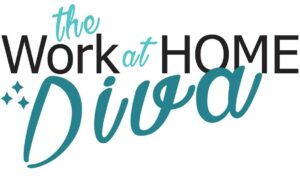Graphic Design Startup Guide Build, Brand & Get Clients

Disclaimer: This post may contain affiliate links. If you click on a link and make a purchase, I may earn a small commission at no extra cost to you. I am not a financial planner, and the information here is for informational purposes only. It should not be considered financial advice. Always consult with a licensed financial professional for advice specific to your situation. For more details, please review my Disclaimer, Privacy Policy, and Terms & Conditions.
So, you’re ready to take the leap and start your very own remote graphic design business in 2025? You’re in the right place.
Whether you’re a self-taught designer or a creative with years of agency experience, there’s never been a better time to go remote. With tools, platforms, and client work just a click away, you can launch a thriving graphic design business from your laptop—no office required.
This guide will walk you through everything you need to know: how to build your business, find your niche, create a brand, and get paying clients (even if you’re just starting out).
Why Start a Remote Graphic Design Business in 2025?
The remote economy is booming. Businesses—big and small—need graphics more than ever: logos, social media content, website designs, marketing materials, and more. And with the rise of AI, automation, and the gig economy, graphic designers who position themselves right can thrive in this new landscape. Plus, remote graphic design lets you work:- From anywhere in the world
- On your own schedule
- With clients you actually want to work with
Step 1: Finding Your Niche — Don’t Be a Jack-of-All-Designs
One of the biggest mistakes new designers make is trying to offer everything to everyone. That’s a fast track to burnout—and missed opportunities. Instead, find your niche. It makes your marketing easier, helps you attract the right clients, and positions you as a specialist (which = higher rates). Popular Niches for 2025:- Brand identity for startups
- YouTube thumbnails and social graphics
- eCommerce packaging design (print-on-demand, Etsy, Amazon brands)
- Digital product design (courses, PDFs, lead magnets)
- Web and app UI/UX for small businesses
- Infographics & data visual design
Step 2: Build Your Brand — From Sketch to Success
Your brand isn’t just a logo—it’s the vibe, voice, and visuals that set you apart. This is what attracts your ideal clients before you even pitch them. Here’s how to build a magnetic personal brand:- Name your business (personal name or creative brand—both work)
- Design a logo and pick a color palette
- Create a simple portfolio website (use tools like Wix, Webflow, or WordPress with Elementor)
- Write a compelling bio that tells your story, your skills, and who you serve
- Post your work on Behance, Dribbble, and Instagram
Step 3: No Clients? No Problem. How to Get Your First Design Gigs
Everyone starts somewhere. You don’t need a client list to start a business—you just need a plan. Here’s how to get your first few clients fast:1. Use Freelance Platforms
- Sign up on Upwork, Fiverr Pro, Toptal, or DesignCrowd
- Optimize your profile with keywords like “remote graphic designer for social media,” “brand identity expert,” or “custom logo design 2025”
- Apply to targeted gigs every day for your niche
2. Reach Out to Your Network
- Tell friends, family, and past coworkers you’re open for freelance work
- Offer a discount for your first three clients in exchange for a testimonial
3. Pitch Local Businesses
- Find small businesses on Instagram or Google Maps that need a visual refresh
- Send a quick message with 2–3 design suggestions and a link to your portfolio
4. Create Mock Projects
- No portfolio? No problem. Make 3–5 fake projects for real brands you admire (clearly label them as spec work)
- These show your skills, style, and creative thinking—and clients love to see it
Step 4: Tools You Need to Run Your Remote Design Business
You don’t need a fancy studio setup. But you do need reliable tools that help you work smarter—not harder. Design & Creative Tools- Adobe Creative Cloud (Photoshop, Illustrator, InDesign)
- Figma or Sketch (UI/UX work)
- Canva Pro (for quick mockups and client templates)
- Notion or Trello (project management)
- Loom (record client walkthroughs or design explanations)
- Zoom or Google Meet (client calls)
- Wave or FreshBooks (invoicing)
- Dropbox or Google Drive
- WeTransfer for large file sharing
Step 5: Keep Growing — Scale Your Business & Raise Your Rates
Once you’ve got a few clients and a portfolio, it’s time to go from freelance to full-on business owner. Here’s how:- Specialize even further to become a go-to expert
- Raise your rates as you gain experience
- Create design packages (e.g., “Startup Brand Kit” or “Social Media Kit”)
- Start offering retainer services for ongoing monthly income
- Build a client waitlist—it creates demand and scarcity
SEO Tips to Help Clients Find YOU
You don’t always have to chase clients—sometimes they’ll find you. But only if your content is SEO-friendly. Use keywords like:- Remote graphic designer for hire 2025
- Freelance logo design services
- Affordable brand identity designer
- Online graphic design for small businesses
- Hire a Canva expert
- Add alt text to images in your portfolio
- Blog consistently with tutorials and design tips
- Include testimonials and keywords on your homepage
